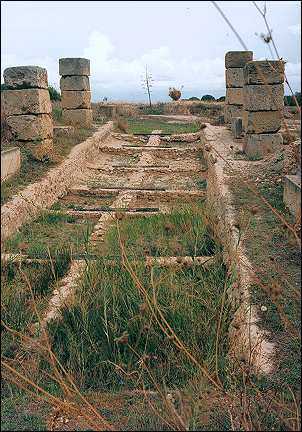

According to Phoenician tradition the city of Carthage (Phoenician Kart-Hadasht, Latin Carthago) was founded by merchants from Tyre (today's Sur in Lebanon) in 814 BC. It is located in today's Tunisia and is today a residential suburb of its capital Tunis. The site had an excellent anchorage, was easy to defend and had a secure supply of provisions, particularly fish from a lake.
Carthage and Rome competed in their attempts to dominate the Mediterranean area. From the 3rd century BC this rivalry developed into open confrontation. The Romans called the inhabitants of Carthage Poeni, on account of their region of origin Phoenicia (in today's Lebanon) and used the adjective Punic for anything related to Carthage.
Carthage's wealth was based on the silver mines of North Africa and Spain, which the Poeni exploited from the 8th century BC. Although most of its inhabitants were mainly interested in trade and commerce, the city developed its own refined taste and exported beds, furniture, mattrasses and cushions. Punic goods were regarded as luxuries in the Roman empire.
Rome established its superiority over Carthage in a series of wars. The First Punic War (264 - 241) wrested control over Sicily and Corsica from Carthage. The Second Punic War (218- 201) under the Carthaginian general Hannibal brought Spain under Rome's control. The Third Punic War (149 - 146) ended in the total defeat of Carthage; the city was plundered and burnt, and no further occupation of the site was allowed.
In 29 BC emperor Augustus established the administrative centre of the Roman province of Africa on the site, now called Colonia Julia Carthago. The city soon grew and became an important Mediterranean centre again. It became Christian from about 200 AD. The Arabs captured it in 705 and shifted the centre of importance to Tunis
The photo shows the ruins of the port of Carthage. The original port was a 100 meter wide circular canal. The inner part, 130 metres in diametre, was both the quay and the dock where repairs were done; it was big enough for up to 220 slim ships at one time. Little of it remains, but there are clear traces of the docks.